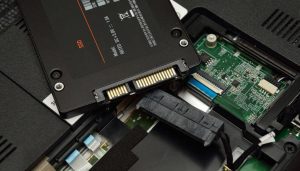How long does the SSD last? Let's calculate its lifespan
Even older systems can be brought back to life thanks to the use of SSDs , but how reliable are these devices over time?
One of the main concerns that arise when thinking about storing our data on memory devices, such as hard disks or SSDs, concerns their duration. How long does the SSD take before it is unusable?
We must first of all point out that the functioning of Solid State Disks and that of hard disks is totally different.

SSDs are similar to NAND flash memories , they do not have moving mechanical parts like HDs . In fact, hard disks are equipped with rotating platters, usually made of ferromagnetic material, and heads that are used to read or write our data. This difference benefits SSDs, which are faster to read and more robust than Hard Disks (more exposed to failures and overheating).
However, like any computer component, SSDs also wear out. The latest generation of solid state drives, to stem the problem of damaged cells, introduces extra memory space, managed by the so-called bad-block management . Despite everything, the sore point of voltage losses remains.
NAND technology stores data by exploiting the tunnel effect and impressing a voltage level in the transistor cells. Based on the number of bits per cell we will have: Single Level Cell ( SLC ), Multi Level Cell ( MLC ), Triple Level Cell ( TLC ).
It is in these cells that the voltage losses we talked about can occur over time and, from this point of view, HDs are more long-lived: the polarity system inside a hard disk is more persistent.
Now that we have a general understanding of the mechanisms that differentiate the most popular long-term storage devices, let's calculate their duration .
It is estimated that a hard disk can last more than 10 years , while SSDs can last around 6 years. But what does it depend on?

Reading has always been the strong point of SSDs, but the same cannot be said for the writing operation.
If we can theoretically save data indefinitely on the hard disk, the SSD has a more limited write cycle . Currently, the wear leveling function guarantees uniform data distribution in the cells: a technique that makes our solid state drive durable over time. In fact, it is precisely the frequency of write cycles that shortens the life of an SSD .
Here's an example, let's say you have a 1TB Samsung 850PRO (MLC) SSD , which supports 3000 write cycles. Let's calculate the duration using the following formula:
(write cycles) x (SSD capacity) / (WAF) x (data written in one year) 3000 x 1000 GB / 5 x 1500 GB
the result in our case will be: 400 years
Obviously this value is indicative, the real lifespan will always be lower and, for this reason, SSD manufacturers have thought of the TBW : a value that indicates the minimum guaranteed lifespan.







